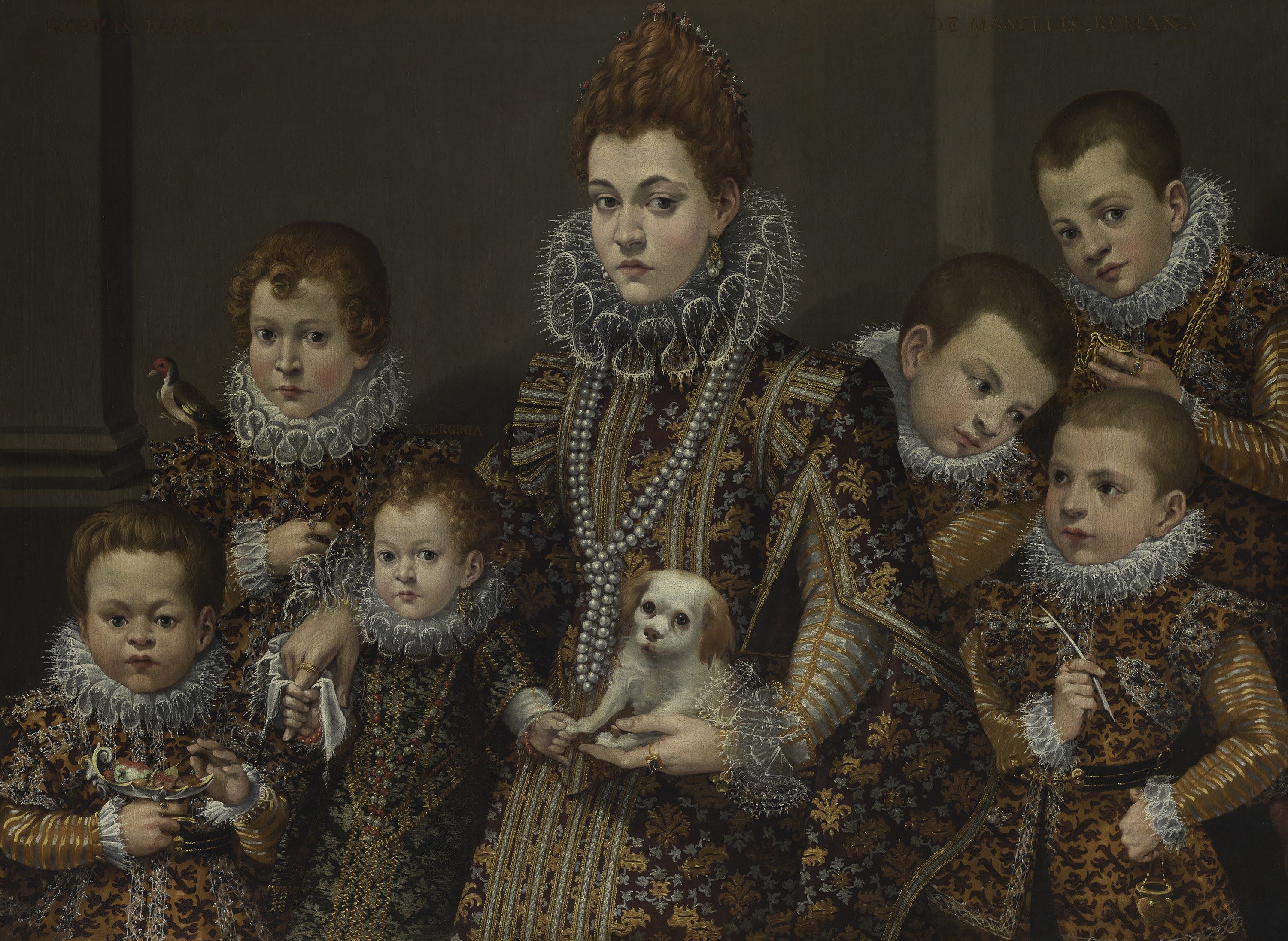A professional female painter working in the 16th century was the rarest of things. But even rarer was Lavinia Fontana’s marriage contract, a document that included a stipulation to allow Fontana, who ended up birthing 11 children, to continue in her artistic career “unburdened by housekeeping.”
“She’s able to continue her career as a painter,” said Emily Beeny, the chief curator of the Legion of Honor in San Francisco, “and she’s able to take on commissions for public projects of increasing importance.”
That contract gave Fontana the freedom to produce one of the most striking masterpieces of the era: “Portrait of Bianca degli Utili Maselli and Her Children,” a family portrait painted between 1603 and 1605 and recently acquired by the Fine Arts Museums of San Francisco, which operate the Legion of Honor and the de Young Museum. Hung on the walls of the Legion of Honor Wednesday morning, the painting features seven striking figures dressed in Elizabethan collars, velvet and brocade, who seize the viewer with their arresting gazes and glittering jewels. The family dog is included, too.
The acquisition of the artwork is part of a larger initiative by the museum, which, under director Thomas Patrick Campbell, is ramping up to celebrate its centennial beginning in November. For the yearlong celebration, the museum is soliciting 100 transformative works of art for its collection. Multiple supporters of the museum came together to fund the painting’s purchase, said the museum’s spokesperson, Helena Nordstrom, for an undisclosed sum.
The painting represents another milestone of sorts: Of the 800 European paintings at the Legion of Honor, only eight are attributed to women.
“We shouldn’t expect to have some sort of 50-50 arrangement,” Beeny said. “There are all sorts of structural reasons why women did not have the same kind of access to training and materials and studio support.”
Women’s work
Bianca degli Utili Maselli, the matriarch who is the subject of Fontana’s portrait, died at the young age of 37 after complications during the birth of her 19th child, illuminating that even the most privileged had difficult lives in early modern Europe.
“The hypothesis is that the painting is of her six children who survived,” Beeny said, noting the high infant mortality rate at that time. Of the children depicted—five boys, one girl—only the girl is identified in the artwork, the name Verginia painted above her head.
The painting came to the Legion of Honor through a matrilineal descent. The little girl in the portrait survived into adulthood and passed the painting on to her daughter, Maria Felice, who married into the Marchetti family. It remained in the hands of that family’s descendants for centuries before being purchased by a private individual in 1990. It then changed hands once more in 2012—to another unnamed individual—before the museum secured it with the assistance of a London-based art dealer.
The portrait of a woman and her family painted by a woman is ultimately safeguarded by a woman. Two female security officers were among the first to see the painting in its new home. “They obviously spend more time with the collection than anybody else,” Beeny said, noting they were particularly moved by connecting with the work of a woman from the 17th century.
Striking splendor
In the painting, Young Verginia clenches the finger of her mother with one hand and the paw of the family pooch with the other, as if she has a hold of both the past and the future—eerily fitting, since the girl would one day become the painting’s owner.
Born in Bologna, Fontana was trained by her father, a former studio assistant to Giorgio Vasari. She had already established herself as a leading Bolognese portraitist before she moved to Rome to work on large-scale projects as well as smaller devotional pictures and portraits.
Even as the museum strives to acquire more artworks painted by women, it’s also necessary to be realistic about outcomes—and even more discriminating about what is selected, since it invites what Beeny called “invidious comparison” if people assume works by women are being purchased as token acquisitions.
It’s clearly not a concern with the Fontana acquisition, a tableau that blinds with its stunning splendor, its expertise evident in the lace and frocks depicted in glittering detail. At a time when women faced so many restrictions, Fontana got her art into the world and supported her family financially with it.
“Her talent was truly exceptional,” Beeny said. “She was also in an exceptional situation that her father and her bridegroom recognized her talent.”
